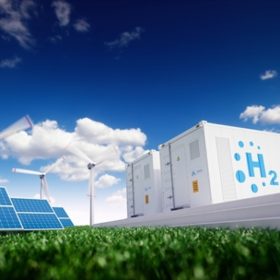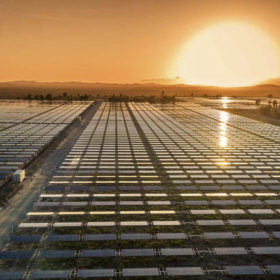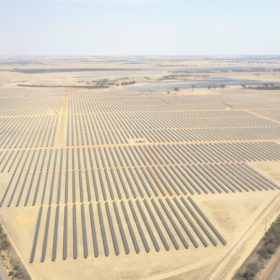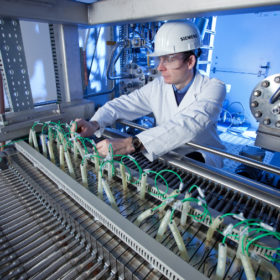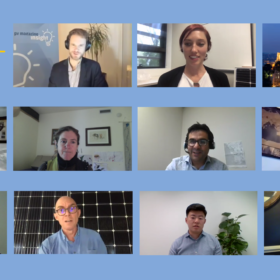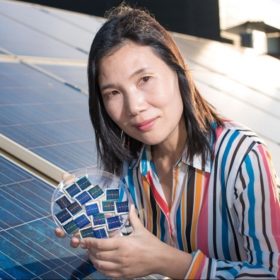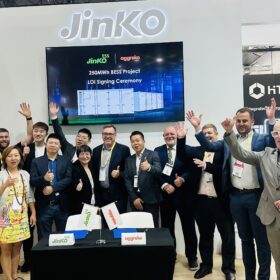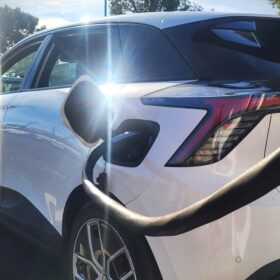Australian-first hydrogen energy facility for Springfield City
Sydney-based domestic hydrogen electrolyser and storage system manufacturer LAVO has revealed it has signed a memorandum of understanding (MoU) to establish Australia’ s first hydrogen fuel cell production line in Springfield City, a private-sector CBD development in Queensland.
UNSW researchers to develop roadmap for using excess renewables to power industry
The University of New South Wales along with several other universities and the CSIRO are embarking on a feasibility study into how New South Wales can utilise excess renewable energy to make fuel, chemicals and feedstocks for industry. The aim is to develop a plan for how fuels and chemicals such as green hydrogen and ammonia produced from renewables can decarbonise industry and grow manufacturing.
Australian world-first domestic hydrogen battery signs an iconic investor
The LAVO 40 kWh battery incorporates an electrolyser, groundbreaking UNSW materials science, and Australian fuel-cell technology, in a slick unit that will be market ready in June this year. Gowing Bros last week became an equity investor and LAVO’s first major customer.
Green ammonia breakthrough a potential boon for solar-powered exports
Chemical engineers at the University of New South Wales and the University of Sydney have made a significant technological breakthrough in the development of green ammonia. The breakthrough could not only alter the global ammonia industry, but more easily use solar to produce green ammonia for export to countries like Japan and Germany instead of straight hydrogen.
2020 Year in Review
Soon 2020 will only be a worry to future high-school history students. But when they ask us if anything good at all happened in 2020, remember this review and tell them that solar PV shone in the darkness. Despite the mess of it all, 2020 has been another good year for Australian solar. The industry has demonstrated resilience, and significant progress has been made in the fields of energy storage, green hydrogen and others.
WA courts Germany with its renewable hydrogen, hosts inaugural Renewable Hydrogen Roundtable
With the joint-feasibility study between Australia and Germany into the viability of a renewable hydrogen supply chain between the two nations now underway, Western Australia, perhaps the most eager Australian state to establish a green hydrogen export industry, has hosted an inaugural roundtable with some of the two nations biggest industry hitters.
Work begins on German-Australian “hydrogen bridge”
The joint-feasibility study into green hydrogen production and trade between Australia and Germany has officially begun, work on what the German Federal Minister of Research has dubbed the “Wasserstoffbrücke,” or “hydrogen bridge”.
UNSW to lead Australian-German green hydrogen trade feasibility consortium
The University of New South Wales will lead a consortium of Australian and German researchers and industrial partners in a feasibility study to tease out and provide solutions for the obstacles for the trade of green hydrogen from Australia to Germany.
Insight on Quality – the prickly issue of PV module warranties: big promises and little recourse
PV modules are being sold with ever longer warranties, but when modules underperform or fail, making claims on those warranties is rarely straightforward. So are the warranties worth the paper they’re written on? Where does this leave installers? And how can this liability be mitigated?
PM’s Prize for Science awarded to UNSW’s Xiaojing Hao for her pioneering work thin-film PV
The 2020 Prime Minister’s Prizes for Science took place virtually this year, but that won’t quash the recognition of Xiaojing Hao, UNSW’s solar pioneer who took home (or rather, received at home) the prize for Physical Scientist of the Year. Hao’s work in thin-film photovoltaics is leading the world in fashioning new and sustainable applications for solar PV.

